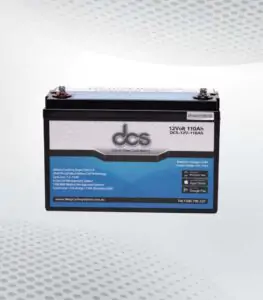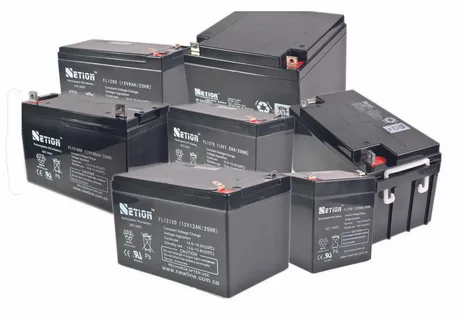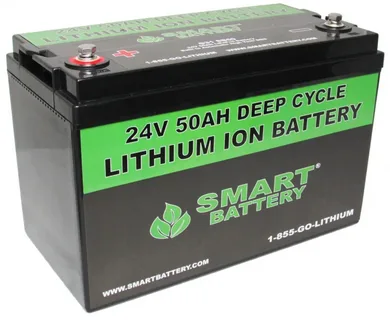The thrill of adventure is calling, and your trusty RV or boat is ready to take you on the journey of a lifetime. But before you hit the open road or set sail, one crucial component can make all the difference between a memorable trip and a frustrating one: the deep-cycle battery. A reliable deep cycle battery is the backbone of your off-grid adventure, powering your essential systems, appliances, and gadgets. Without it, you’ll be stuck in the dark, literally. With so many options on the market, choosing the right deep-cycle battery can be daunting, especially for those new to the world of RVing and boating.
Understanding Your Power Needs
As you embark on your next adventure, whether a road trip in your RV or a sailing excursion on your boat, having a reliable power source is crucial to keeping your essential systems running smoothly. But with so many deep-cycle battery options available, it can be overwhelming to determine which one is right for you. To make an informed decision, you must understand your power needs and determine your deep-cycle battery requirements.
This means taking a closer look at your energy usage, including the types of appliances and systems you’ll be powering, the frequency of use, and the duration of your trips. By assessing your power needs, you can identify the ideal battery size, type, and features to meet your specific requirements, ensuring you have a consistent and dependable power source to support your adventures.
Types of Deep Cycle Batteries
When choosing the right deep-cycle battery for your RV or boat, understanding the available types is crucial. The market is flooded with various options, each with unique characteristics, advantages, and disadvantages.
- Flooded lead-acid batteries, the most traditional and affordable option, offer a reliable and well-established technology, but may require more maintenance and have a shorter lifespan.
- On the other hand, absorbed glass mat (AGM) batteries provide a more maintenance-free experience and are better suited for high-performance applications, but come at a higher price point. Gel batteries, known for their durability and vibration resistance, are ideal for rough waters and off-grid adventures, but can be more expensive and have limited cold-weather performance.
- Meanwhile, lithium-ion batteries, the newest kid on the block, boast an impressive energy density and long cycle life, but are still a relatively new technology and may come with a higher upfront cost.
By understanding the pros and cons of each type of deep-cycle battery, you can confidently make an informed decision that meets your specific needs and powers your adventures.
Choosing the Right Deep-cycle battery for Your RV or Boat
Several key factors must be considered when choosing the right deep-cycle battery for your RV or boat. The first and most critical consideration is the type of battery you need. Do you require a flooded, AGM (Absorbed Glass Mat) battery, or Gel battery? Each type has unique characteristics, advantages, and disadvantages, and selecting the right one will depend on your specific needs and preferences. Another crucial factor is the battery’s capacity, measured in ampere-hours (Ah).
A higher capacity battery will provide more power and longer runtime, but it will also be heavier and more expensive. You’ll also need to think about the battery’s voltage and cycle life, which refers to the number of charge and discharge cycles it can handle before its capacity begins to degrade. Additionally, you’ll want to consider the physical size and weight of the battery, as well as any additional features you may need, such as built-in monitoring systems or remote monitoring capabilities.
Application Of Lithium Battery
When choosing the right deep-cycle battery for your RV or boat, consider the specific application you’ll be using it for. Different activities require varying levels of power and performance, and selecting the right battery can make all the difference in ensuring a smooth and enjoyable experience.
Recreational Vehicles (RVs)
For RV enthusiasts, a lithium battery is essential for powering appliances, lights, and other accessories while camping or traveling off-grid. Whether a weekend warrior or a full-time RVer, a reliable deep-cycle battery can provide the power to stay comfortable and connected on the road.
Marine Application
For boat owners, a deep-cycle battery is crucial for powering navigation systems, communication devices, and other essential electronics while on the water. Whether fishing, cruising, or simply enjoying a day on the lake, a high-quality deep-cycle battery can provide the power and reliability you need to stay safe and enjoy your time on the water.
Off-Grid Systems
For those who live off-grid or are building a remote cabin, a deep-cycle battery can be a critical component of a renewable energy system. By storing excess energy generated by solar panels or wind turbines, a deep-cycle battery can provide power during periods of low energy production, ensuring a consistent and reliable supply of energy.
Additional Applications
Deep-cycle batteries can also be used in a variety of other applications, including golf carts, electric vehicles, and backup power systems. No matter where your adventures take you, a high-quality deep-cycle battery can provide the power and reliability you need to stay safe and enjoy your experience.
Conclusion: Powering Your Adventures with Confidence
As you embark on your next adventure, whether a road trip in your RV or a sailing excursion on your boat, you can have peace of mind knowing that your deep-cycle battery is up to the task. With the right battery, you’ll be able to power your essential systems, keep your lights shining bright, and enjoy the freedom to explore without worrying about running out of juice.
Following the guidelines outlined in this ultimate guide, you can choose a deep-cycle battery that meets your specific needs and provides the reliability and performance you need to power your adventures confidently. Whether you’re a seasoned explorer or just starting, a high-quality deep-cycle battery is the key to unlocking unforgettable experiences on the open road or water. So why wait? Choose the right battery for your RV or boat today and prepare to power your adventures confidently!
Future Trends in Deep-cycle battery Technology
As we look to the future, deep cycle batteries are poised to undergo significant transformations. The industry is expected to evolve excitingly with technological advancements and increasing demands for sustainable energy solutions. Here are some trends that will shape the future of deep cycle batteries:
Lithium-Ion Batteries Take Center Stage
Lithium-ion batteries are already gaining popularity in the RV and boat communities, and their adoption is expected to continue to rise. With their high energy density, long cycle life, and low maintenance requirements, lithium-ion batteries are becoming the go-to choice for many adventurers.
Increased Focus on Sustainability
As concerns about climate change and environmental sustainability continue to grow, the demand for eco-friendly deep-cycle batteries will increase. Expect to see more manufacturers incorporate sustainable materials and production methods into their designs.
Advancements in Battery Management Systems
Battery management systems (BMS) are critical components of deep cycle batteries, ensuring safe and efficient operation. Future BMS innovations will enhance performance, reliability, and communication capabilities, making monitoring and controlling their batteries easier.
Integration with Renewable Energy Sources
Integrating deep cycle batteries with renewable energy sources like solar and wind power will become more widespread. This synergy will enable RV and boat owners to harness clean energy and reduce their reliance on fossil fuels.
Smart Battery Technology
The proliferation of smart technology will shape the future of deep cycle batteries. Expect to see batteries that can communicate with other devices, provide real-time monitoring and diagnostics, and even offer predictive maintenance capabilities.
As the industry continues to evolve, staying informed about the latest developments and trends is essential. By doing so, you’ll be well-equipped to make informed decisions about your deep-cycle battery needs and stay ahead of the curve in powering your adventures.
Installation tips
Installing a deep-cycle battery in your RV or boat requires careful planning and attention to detail to ensure a safe and reliable power source for your adventures. Here are some essential installation tips to keep in mind:
Choose the right location: Choose a well-ventilated area protected from extreme temperatures, moisture, and physical damage. Ensure the battery is easily accessible for maintenance and replacement.
Secure the battery: Use heavy-duty brackets and straps to prevent the battery from shifting or falling during travel. This will help prevent electrical shorts and damage to the battery and surrounding components.
Connect correctly: Follow the manufacturer’s instructions for connecting the battery to your RV or boat’s electrical system. Use the correct cable size and type to prevent overheating and electrical fires.
Monitor and maintain: Install a battery monitor to track the battery’s state of charge, voltage, and temperature. Regularly inspect and maintain the battery to extend lifespan and prevent sudden failures.
Protect from corrosion: Apply a corrosion-inhibiting coating to the battery terminals and connectors to prevent moisture and salt air damage.
Consider a battery management system: Invest in a battery management system (BMS) to regulate charging and discharging and prevent overcharging, undercharging, and electrical surges.
By following these installation tips, you can ensure a safe, reliable, and efficient power source for your RV or boat, giving you the freedom to confidently power your adventures.
FAQs
1. What is a deep cycle battery and how does it differ from a regular battery?
- Answer: A deep cycle battery is designed to provide steady power over a long period and can be deeply discharged without damage. Unlike regular starter batteries, which deliver a burst of power for a short time, deep cycle batteries are used in applications that require sustained energy delivery, such as RVs, boats, and solar power systems.
2. How do I maintain a deep-cycle battery to ensure longevity?
- Answer: To maintain a deep-cycle battery, regularly check the water levels if it’s a flooded lead-acid type and keep the terminals clean and tight. Ensure the battery is charged appropriately with a compatible charger, avoid overcharging, and store it in a cool, dry place when not in use. Periodic equalization charging can also help prevent stratification and extend the battery’s life.
3. What are the common applications of deep cycle batteries?
- Answer: Deep cycle batteries are commonly used in applications that require a consistent and reliable power source over an extended period. These include recreational vehicles (RVs), boats, golf carts, renewable energy systems (like solar or wind), and backup power systems. Their ability to withstand deep discharges makes them ideal for these uses.
Conclusion
Deep cycle battery is essential for applications requiring prolonged and reliable power delivery. Understanding their differences from regular batteries, proper maintenance practices, and common applications can help users make informed decisions and maximize their battery’s lifespan. Following recommended care guidelines, users can ensure their deep cycle batteries perform optimally for years.




